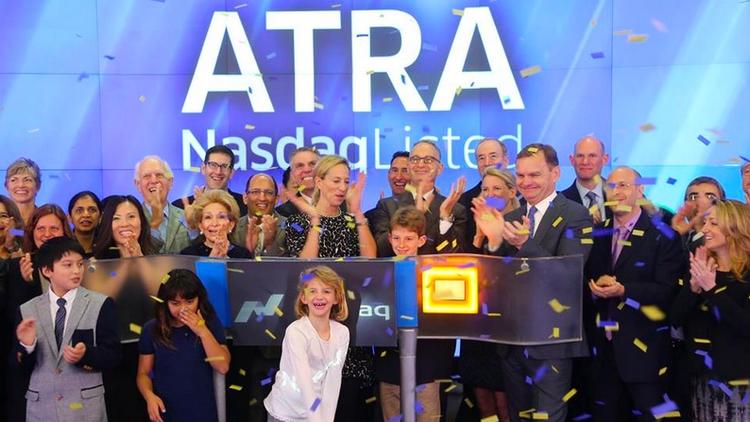Before the markets opened on Monday, Atara Biotherapeutics, Inc. (NASDAQ:ATRA) announced its plans to discontinue the development of its lead candidate, PINTA 745. The drug was a phase II candidate with a target indication of protein energy wasting (“PEW”), a symptom associated with end stage renal disease (“ESRD”). On the news, the company lost more than 36% of its market capitalization, suggesting markets feel that the drug accounted for a large portion of its pipeline’s market capitalization. The question now is, can the company recover, or does the latest discontinuation present Atara as an intriguing short as we head in 2016? Let’s take a look.
First, let’s quickly address PINTA 745. The drug is what’s called a peptibody. It is a combination of a peptide and an antibody, and Atara hypothesized it could reverse the inflammation (and in turn muscle wasting) that comes about as a response to dialysis. As mentioned, the drug was in a phase II before Atara decided to halt development, with an endpoint of percent change from baseline in Lean Body Mass (“LBM”), as measured by what’s called DXA, 12 weeks into treatment. Needless to say, the drug missed the endpoint, as well as missing a number of secondary endpoints including controlling inflammation and improving physical function. In short, it didn’t work. On the bright side, the company has only spent $10 million from inception to discontinuation. When viewed against the backdrop of the company’s cash position – $334.3 million at last count – its not the deep financial setback that a similar discontinuation may be for a company in a more fragile financial position (something we often see at this stage of biotech dev).
Having said this, without a promising secondary candidate to direct its cash towards, there is little room for recovery from its current position. So, on this note, what has the company got up its sleeve?
Well, Atara’s development pipeline is split into two distinct categories – molecularly targeted and t-cell candidates. PINTA 745 is an example of the former, and its discontinuation, for now at least, puts an end to that side of its pipeline (the other candidate is STM 434, currently phase I, not expected to complete before the second half of next year). The real action is on the t-cell side, on which Atara has two candidates, each in phase II trials for two separate indications.
The first is EBV-CTL – a drug targeting Epstein-Barr Virus (“EBV”) malignancies. The two trials, NCT01498484 and NCT00002663 are investigating these malignancies in NHL patients and individuals with leukemia. Preclinical and phase I data shows promise, but the problem with this drug is it takes a long time to trial. The first trial kicked off in 2011, and is set to close in December next year. Assuming a phase III will require extended analysis (normally the case), we are looking at a 5-7 year trial time post phase II – meaning it could be 2023 before the company can file an NDA. The second trial is even more lengthy – it kicked off in March 1995, and should finish March 2016.
The second drug is CMV-CTL, with a target indication of cytomegalovirus infection. This one has a large patient population, if it can reach the commercialization phase of development. An estimated 50-60% of the US population come into contact with CMV at one point or another, and while symptoms are not all that serious in many cases, a large portion of sufferers seek treatment. Again, however, the problem here is time to market and, further, competition. In the two lead trials, completion dates are mid 2016 and early 2017 respectively. Add a five year trial time to end phase III, and assuming no complications, the best we can hope for is, again, a 2023 NDA submission. From a competition perspective, things look tough. Current SOC is marketed by Hoffmann–La Roche and Roche Holding AG (OTCMKTS:RHHBY). In order to gain approval, Atara will likely have to demonstrate stat-sig improvement over these two SOC therapies, and even if it does that, will then need to outdo the marketing efforts of two industry behemoths if it is to capture any sizeable portion of the market.
So what’s the takeaway? Well, the company has plenty of cash on hand – this gives it some breathing room. However, it is going to be at least 5 years before we see an NDA, and by that point Atara will need to raise funds for marketing. There is every chance its long tail pipeline could generate revenues for the company, but not before 2025, and investors in biotech are rarely that patient. As such, there is likely further downside in the company going forward, at least near term, as investors cut losses and pull out of their long exposures.
